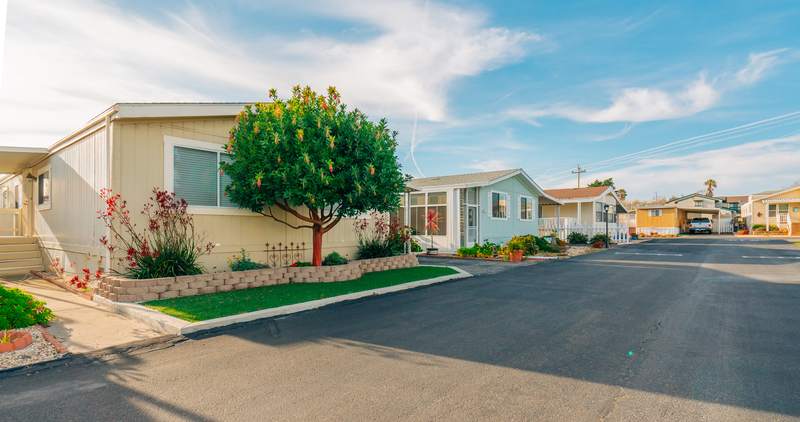Effective Nov. 16, 2025, both Fannie Mae and Freddie Mac no longer require a specific minimum credit score for conventional loan approval. Instead, loan decisions will be based on an analysis of overall credit risk factors.
While adjustable-rate mortgages (ARMs) come with many benefits – such as lower initial interest rates – some homeowners may choose to refinance to a fixed-rate loan to prevent their mortgage payments from fluctuating over the remainder of the term. However, that doesn’t mean all borrowers would benefit from refinancing their adjustable-rate home loans.
In this article, we’ll take a closer look at when to consider an ARM refinance and how to go about using this process, but first, let’s start with the basics.
How Does An Adjustable-Rate Mortgage (ARM) Work?
An adjustable-rate mortgage is a type of home loan with an interest rate that changes once the adjustment period begins. ARMs have an initial fixed-rate period at the beginning of the loan. During this time frame, often lasting for the first 5, 7 or 10 years of the loan, your interest rate remains unchanged.
After that, the rate adjusts up or down based on index rates and financial markets. This differs from a fixed-rate mortgage where the principal and interest in your monthly payment remain constant throughout your loan term.
How often the rate can adjust up or down depends on the terms of the mortgage. There are also rate caps and floors in place within your mortgage agreement that set the maximum possible rate, as well as the minimum. These protect borrowers because the rate can’t go up or down more than a certain percentage with the initial adjustment, subsequent adjustments or over the life of the loan.
Can You Refinance An ARM Loan?
Yes, you can refinance an adjustable-rate mortgage, as long as you meet your lender’s requirements. Since a refinance works by replacing your current mortgage with a new loan, you can use this option to change your loan type, interest rate, monthly payment amount and repayment term. To qualify for a refinance, most lenders require:
- At least 5% home equity
- A credit score of 620 or higher if you’re applying for a conventional loan, or 580 or higher for an FHA or VA refinance loan
- A debt-to-income (DTI) ratio of 50% or less
See What You Qualify For
Buy A Home
Discover mortgage options that fit your unique financial needs.

Refinance
Refinance your mortgage to have more money for what matters.
Tap Into Equity
Use your home’s equity and unlock cash to achieve your goals.
Why Refinance An ARM Into A Fixed-Rate Loan?
There are several reasons why a borrower may decide to refinance their ARM into a fixed-rate loan.
One reason homeowners choose to replace their ARM is to secure a lower interest rate than what they originally got with their first loan. If there have been recent economic changes or they’ve improved their credit score, applying for a new mortgage could land the borrower a lower refinance rate and save them money on interest in the long run.
Another reason you might choose to refinance is to obtain a consistent monthly payment. Some home buyers apply for an ARM with the intention of refinancing to a fixed loan before their interest rate changes. Because fixed-rate loans use the same rate throughout the term, monthly mortgage payments stay the same, though your insurance premiums and property taxes may change.
Example ARM Refinance Scenario
Let’s run through an example scenario to better illustrate how changing between an ARM and fixed-rate loan can affect your budget.
For this example, you have a $300,000 30-year 5/1 ARM with a 7% interest rate. After the 5-year fixed period, the mortgage rate can adjust once a year. There’s an initial cap or floor on adjustment of 2% along with a 2% cap or floor on every adjustment after that. You made a 3.5% down payment when you got the loan and now have a monthly principal and interest payment of$1,926.05.
Once the adjustment period begins, your interest rate goes up to 8.25%. Now your monthly mortgage payment is $2,174.92. This is $248.87 more than the previous year. This type of fluctuation in a mortgage rate, while seemingly small, can have a significant impact on your budget. If your income is already spread thin, it could be difficult to pay the higher amount.
Some buyers would rather forgo the lower, fluctuating interest rate for a slightly higher, but consistent one. Instead of keeping your ARM, let’s say you refinance to a 30-year, fixed-rate mortgage with a 8% interest rate and 3.5% down payment. Your monthly principal and interest payment will be $2,124.25, but it will remain the same until the loan is paid off, making it easier to budget for. Knowing what your payment will be in the future can ensure you’ll have enough funds set aside to make your monthly payments.
Loan type | Loan amount | Down payment | Interest rate | Monthly mortgage payment |
|---|---|---|---|---|
Adjustable-rate mortgage | $300,000 | $10,500 | Initial rate: 7% | $1,926.05 |
Adjusted rate: 8.25% | $2,174.92 | |||
Fixed-rate loan | $300,000 | $10,500 | Fixed rate: 8% | $2,124.25 |
When Should You Refinance An ARM?
There are certain situations in which it definitely makes sense to consider refinancing into a fixed-rate loan. Let’s run through a couple of reasons why you might want to go this route:
- You want a consistent monthly payment. As mentioned above, switching to a fixed interest rate will help keep your monthly payments stable. If you want to avoid an ARM’s adjustment period, you could use a refinance to change the type of home loan you have.
- You want a different repayment period. Refinancing your ARM can allow you to change your term. Maybe you want a longer repayment period to make your monthly payment smaller or you want a shorter term to help pay off your mortgage faster.
- Interest rates are lower now than when you got the ARM. If economic changes have dropped market rates, you might be able to secure a lower interest rate when you refinance to a new mortgage.
- You have a higher credit score. You can also get a lower interest rate if your credit has improved from when you first got your home loan. Making regular payments can build credit, which you can take advantage of when you refinance your mortgage.
Find out if a 30-year fixed loan is right for you.
See rates, requirements and benefits.
When Should You Not Refinance An ARM?
On the other hand, there may be some reasons to keep your current adjustable-rate mortgage. If you’re in one of the following situations, you might want to hold off on an ARM refinance:
- You don’t plan on staying in your home long-term. If you’re going to sell your house before the adjustment period begins, you most likely won’t get to enjoy the benefits of refinancing to a fixed-rate loan.
- Interest rates are running higher. If interest rates are on the high side, getting a new mortgage may cost you more, even if your ARM rate increases. If a fixed loan will have a higher rate than your capped ARM rate, you might be better off not refinancing.
- You plan on paying down your balance. Some people use an ARM as a financial hack. Knowing that they can get a lower rate for the first several years of their loan, they’ll make extra payments so that they can pay down their mortgage before the rate starts to adjust.
- You’re worried you might not qualify. If you think that your credit score, DTI or home equity won’t meet your lender’s requirements, you should probably wait to apply for a refinance. Getting a refinance with a too-low credit score or too-high DTI could lead to a higher interest rate.
How To Refinance An Adjustable-Rate Mortgage
The process of refinancing to an ARM is the same as other mortgage refinances. You can use the following steps to complete the process:
1. Submit An Application
Just like your first mortgage, you’ll fill out an application and provide personal information so the lender can verify your credit score and debt-to-income ratio. You’ll also share documents like W-2s, 1099s, tax returns and pay stubs. Bank statements and asset statements from other accounts are also shared at this point.
2. Choose A Type Of Home Loan
Your loan officer will explain how the refinance process works, answer any questions about the types of loans the lender offers and make sure that the mortgage you choose is the best fit for your financial situation.
3. Wait For Approval
At this point in the process, your lender will use the information you provided in the earlier steps to crunch some numbers. They’ll review your credit history, calculate your debt-to-income ratio, request an appraisal of your home and determine your monthly payment. Once they’re satisfied with the new loan, they’ll approve your application and begin preparing for closing.
4. Close On Your New Mortgage
Unlike the closing appointment you attended for the purchase of your home, closing on a refinance loan is more straightforward. You and your lender will meet to complete the paperwork from your new loan. You’ll also have to pay closing costs and any other required fees. From there, you’ll have a new loan and monthly payment.
The Bottom Line
ARMs can make financial sense if you’re a borrower with a larger loan or you’re planning to move before the adjustment ever happens. They are also used by some to take advantage of the low interest rate at the beginning of the loan as an opportunity to pay down the balance of their loan faster.
Whether to stay with an ARM or refinance to a fixed-rate loan also depends heavily on the market and the difference between the two interest rates. To fully go over your loan options, .
View Your Refinancing Options
See recommended refinance options and customize them to fit your budget.

Victoria Araj
Victoria Araj is a Staff Writer for Rocket Companies who has held roles in mortgage banking, public relations and more in her 15-plus years of experience. She has a bachelor’s degree in journalism with an emphasis in political science from Michigan State University, and a master’s degree in public administration from the University of Michigan.












